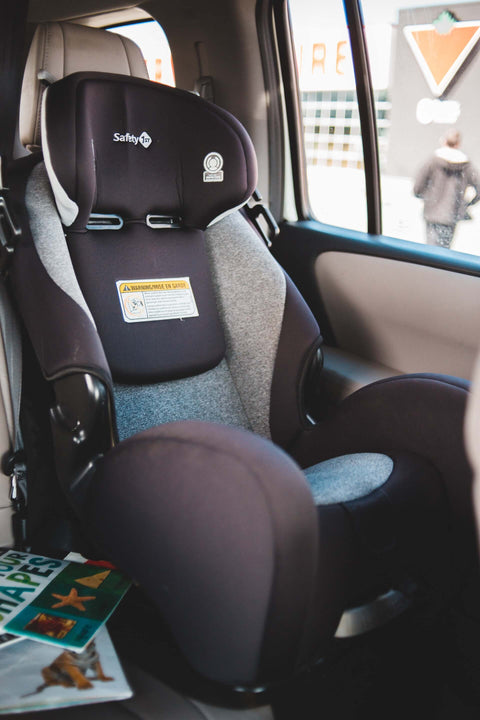
Protecting your child in the car is a top priority. Choosing the right child seat plays a crucial role. Many parents ask themselves when they should switch from an infant car seat to a child seat. In this article you will find out everything you need to know.
1. Baby seat or child seat: what is the difference?
Before we dive into when to switch from an infant car seat to a car seat, it's important to understand the difference between these two options.
The Baby seat is specifically designed for newborns and toddlers up to a certain age or weight. It is lightweight and easy to transport, making it the first choice for parents who are often on the go. Baby seats are rear-facing and offer optimal safety for infants.
A Child seat However, it is suitable for older children who can already sit independently. It is usually used from the first birthday or once your child has reached the required weight and height. Child seats are available in a variety of sizes and designs and offer excellent protection for toddlers and older children.
2. The right time: When should you switch?
The point at which you should switch from an infant car seat to a child seat depends on various factors. Here are some important considerations:
Age of 15 months: Most infant car seats are designed for children up to 15 months old or a certain weight. It's important to check your infant car seat manufacturer's instructions to make sure you don't miss the right time.
Weight and size: In addition to your child's age, you should also consider their weight and height. Child seats are usually designed for children who weigh at least 9 kilograms and can sit independently.
I-Size regulation: In some countries there is the so-called I-Size regulation, which sets stricter safety standards for child seats. Check the regulations in your country and make sure the car seat you choose meets current safety requirements.
Security: Your child's safety should always come first. If your child is getting too big or heavy in the baby seat and their head is sticking out over the edge, it's time for a change. The correct position and attachment of the seat belt is also crucial.
3. The different children's seating groups
Child seats are divided into different groups depending on your child's age, weight and height. Here are the main groups:
- Group 0 (up to 10 kg): These seats are suitable for newborns and very small babies. They are rear-facing and offer optimal protection.
- Group 1 (9-18 kg): These seats are intended for children from around 9 months to 4 years old. They can be used both backwards and forwards.
- Group 2 (15-25 kg): These seats are suitable for children aged approximately 3 to 7 years and are used forward-facing.
- Group 3 (22-36 kg): These seats are suitable for children aged around 6 to 12 years. They are usually booster seats that help children learn how to properly use the vehicle's seat belt.
4. The importance of timing
The right time to switch from the baby seat to a child seat is crucial for your child's safety. If your child becomes too big or too heavy for the baby seat, it no longer offers sufficient protection. A child seat offers better protection during this phase and ensures that your child sits safely and comfortably in the car.
5. Note maximum weight and size
It is important to note the maximum weight and size limits of your child seat. Never exceed these limits as this may jeopardize your child's safety.
6. The direction of travel
When using the child seat, it is important to pay attention to the correct direction of travel. A rear-facing car seat offers the best safety for your child in the early years. You can later switch to a forward-facing seat if your child meets the required criteria.
However, keep in mind that in many countries, rear-facing seats can be used until older ages or weights due to their proven safety benefits. It is recommended that your child be rear-facing for as long as possible to minimize stress on the neck and spine in the event of an accident. This may mean that your child should travel in a rear-facing car seat until they are four years old or longer. Exact regulations vary by country, so it is advisable to check the regulations in force in your region and follow them to ensure your child's safety.
7. Safety first
Regardless of when you change it, you should always ensure that the child seat is properly installed and secured. Read the manufacturer's instructions carefully and, if in doubt, have the installation checked by an expert.
8. Conclusion
Switching from an infant car seat to a child seat is an important step in your child's development and in terms of their safety in the car. Please note the age, weight and height of your child as well as the applicable safety regulations in your car Country. Make the decision at the right time and give your child the best possible safety while traveling by car.
Remember that your child's safety should always come first. A suitable child seat and correct use are crucial to protecting your child on every car journey.



